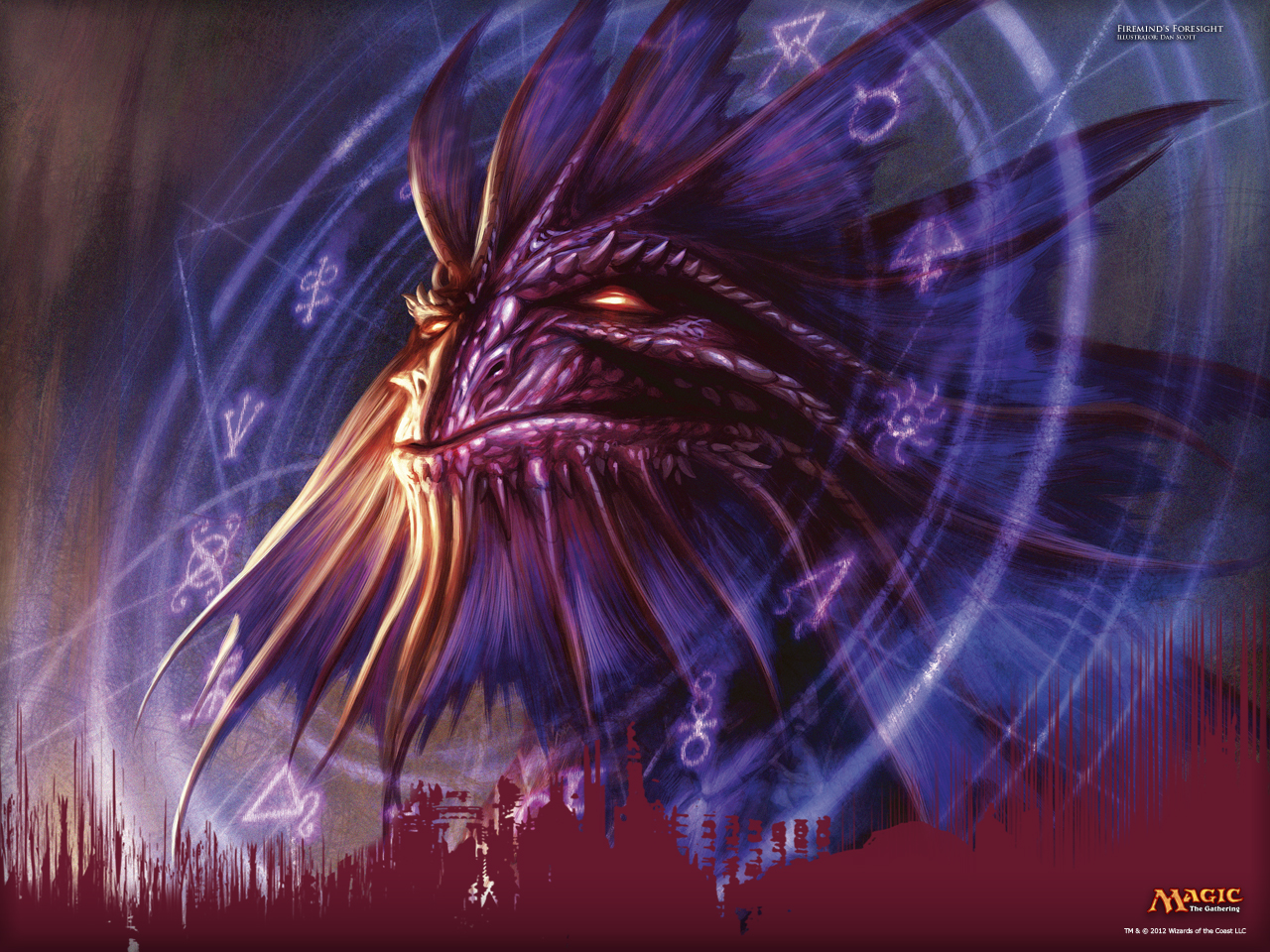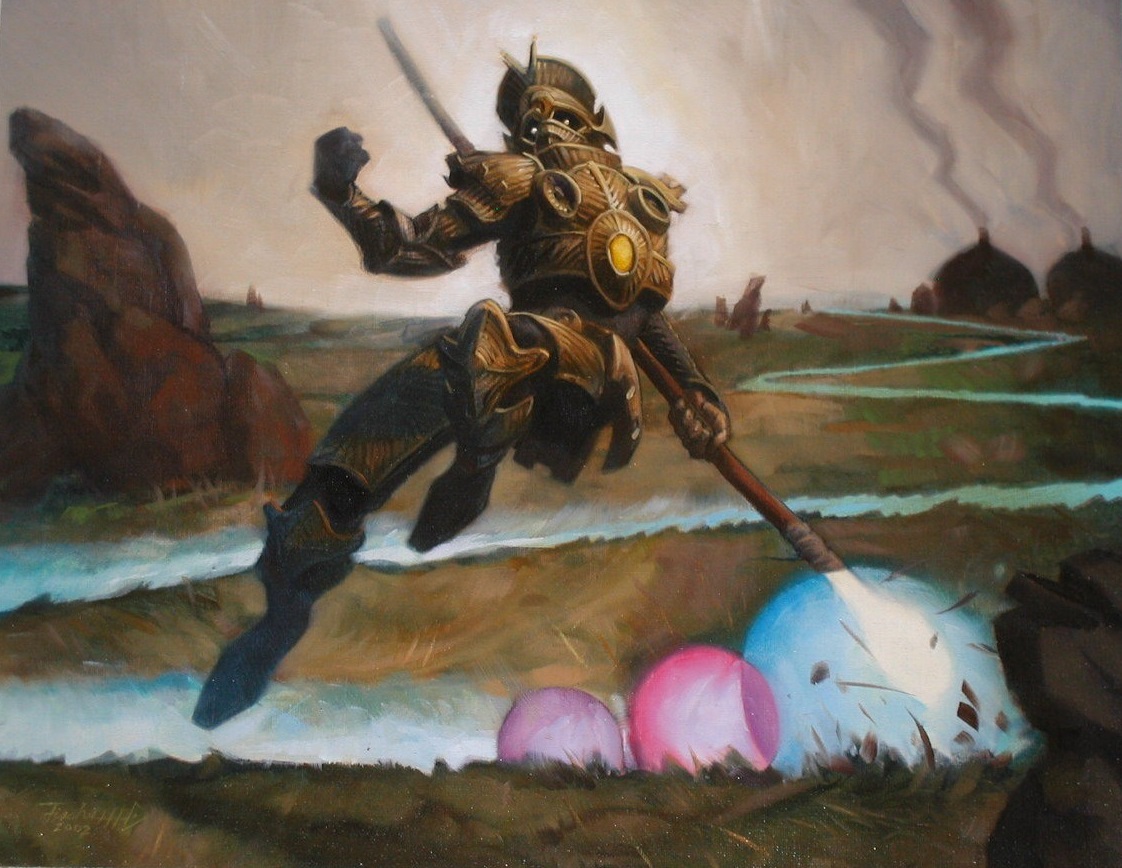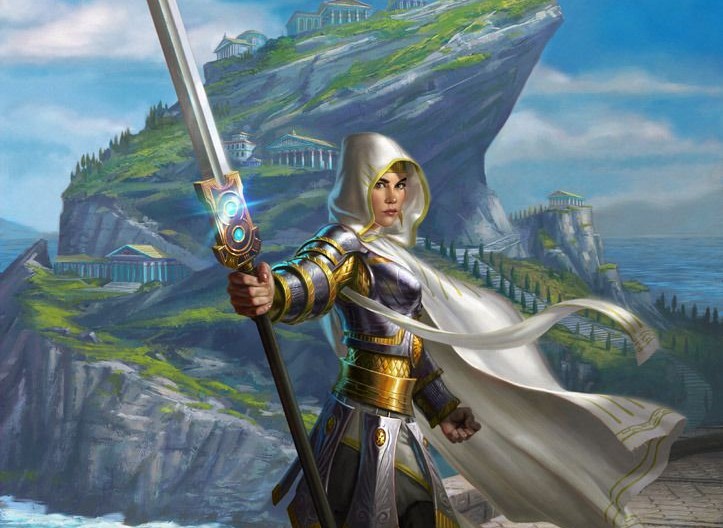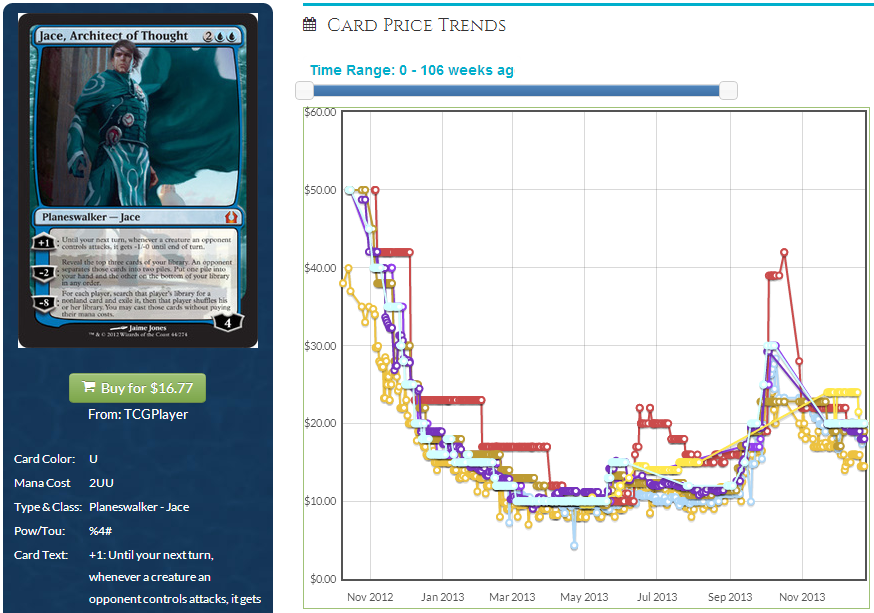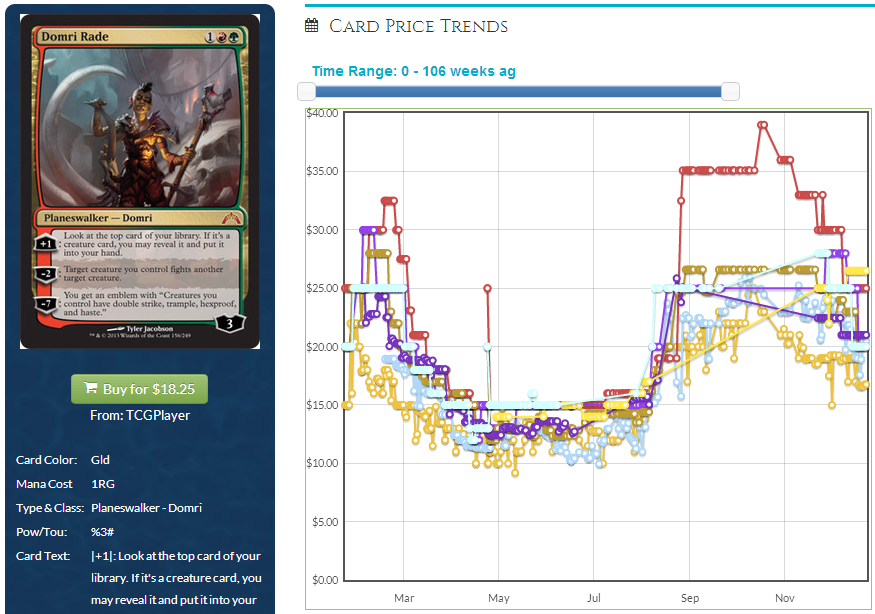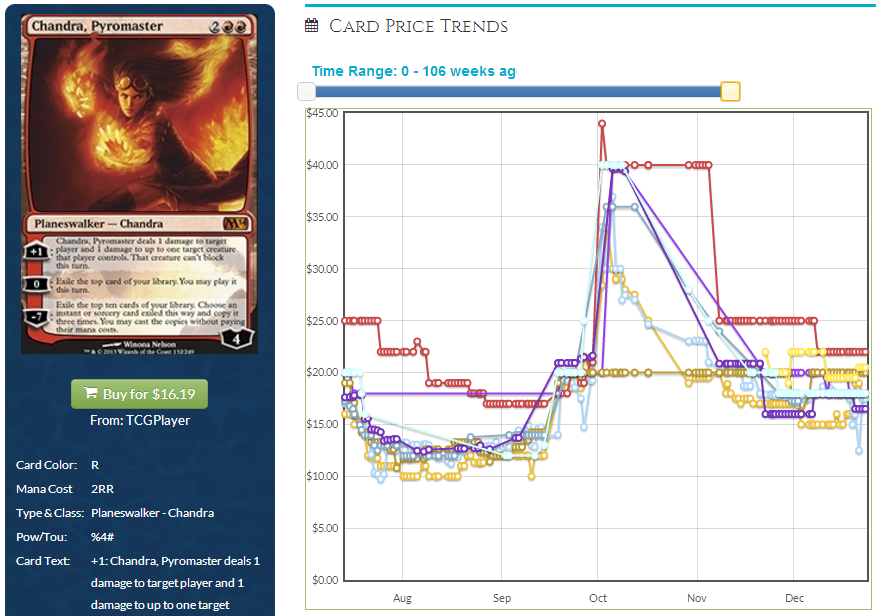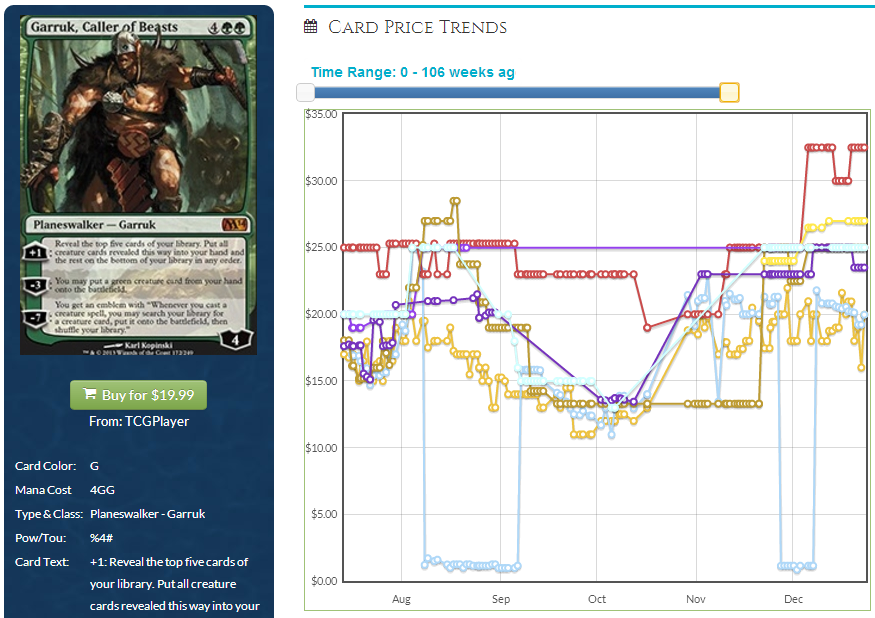By: Travis Allen
Boy, I get you guys on Christmas and New Years? Excellent! I’m sure, like me, none of you ever do anything fun so you’re all sitting at home reading Magic articles on holidays, right? Guys?
Today is the first, and as the teeming hordes gear up for a what will end up being no more than three weeks at the gym, we gaze outward towards the coming year. January 1st is not a noteworthy date in MTG timelines, but it’s not uncommon for many of us to be thinking a little larger and a little more long-term today. The calendar year is laid out before us, ripe with possibilities and pitfalls. What will the subsequent days hold?
Nine months ago I jotted down the idea for an article about predictions. I never got around to it, and since then one of the notes I made materialized. (Thoughtseize being reprinted somewhere between MM and Theros.) My minor success has spurred me forward, and I’m going to share a few more things I see on the horizon for Magic in the coming year. Keep in mind all of this is probabilistic. If I guess thing X will happen, it just means that I think it’s more likely that it will happen then it won’t, not that it’s a mortal lock.
Prediction #1: We won’t see Fetchlands this year, but we’re getting quite close
Magic has this characteristic to it where we’re used to thinking about it on a day-to-day basis. We see cards rise in price in the span of hours and tournament results are constantly turning things on their heads every week or two. At the detailed level, Magic feels like it moves very fast.
Meanwhile, the general arc of the game is very slooooow. We only get new product a few times a year. It’s planned out years in advance. If a deck crops up that’s just far and away too good (CawBlade,) there’s nothing Wizards can do to fix the problem in a meaningful time frame other than ban the cards.
We only get one new theme a year. 2013 was Theros and the Greek thing. If you were sitting around in late March of 2013 and you saw the announcement for Theros and thought “I don’t like Greek mythology,” then you were pretty much screwed for an entire year. The game’s direction was set, and you were going to have to put up with it until Theros had run it’s course. Similarly, any flavor or mechanical direction they choose lives out the same way. On the eve of sets the rumor runs wild, with all sorts of ideas about what cards will be included, mechanics, new Planeswalkers, etc. Then the spoiler is fleshed out and you get what you get. No patch two weeks later to fix a change. No shaving a mana off a card. They’re printed as they’re printed, and that’s that.
The reason I bring all of this up is to help you step back when considering the timeline of lands in Magic. Remember we only get one new cycle of lands each year. One. When the scrylands were shown for Theros, that was it. No enemy manlands. No Nimbus Maze cycle. No fetches. We had to wait an entire year to see what the next land cycle would bring us. While we only see things a few months in advance, Wizards is the one playing the real long game.
This fall will bring the next cycle of lands, and the butts in the folding chairs are clamoring for fetchlands. It feels like it’s been forever since we had them, and the prices reflect that sentiment. As much as many out there want them though, I don’t think we’re getting them this year. Let’s take a look some past land cycles:
Theros: Scrylands
Ravnica: Shocklands
Innistrad: Enemy checklands
Scars of Mirrodin: Fastlands
Zendikar: Enemy Fetches, Manlands
Shards: None
Lorwyn/Shadowmoor: Tribal & Filters
Timespiral: Nimbus Maze/Horizon Canopy/etc
Ravnica OG: Shocklands
Kamigawa: Legendary lands or something? Who even knows
Mirrodin: Artifact lands
Onslaught: Fetchlands
That’s the past twelve years of Magic blocks and their respective lands. You can see that we only get “cool” lands every several years. It took three years after Onslaught to get quality rare lands. The original Ravnica gave us shocks, and then it was another four years before we had something special with the Zendikar lands. Filters were there in the interim, but were not particularly popular until much more recently. After Zendikar, you had two more years of boring mana bases until Return and the shocks, well, returned. Now, here we are considering the 2014 mana base. Given the history of lands, do you think Wizards will give us Fetchlands with only a single set between them and the Shocklands? It was seven years after Onslaught that Wizards reprinted Fetchlands. 2014 will be five years after Zendikar. Almost enough time has elapsed for Fetches to return in a fall set, but not yet.
Rosewater has said repeatedly that lands are a precious resource. There is simply not a lot of design space in lands, so they use the good ones sparingly. If they flood us with awesome lands several years in a row, we end up getting used to them. So they dole them out, one cycle every several years, to make the great lands feel special. Shocklands are still in Standard. Do you think as they rotate out, we’re going to be handed Fetchlands? Remember that Fetches are basically the most popular land not on the reserved list. Talk about greedy.
2015 is probably the earliest we’ll see Fetches in a fall set. It will be six years past Zendikar, which is nearly as long as between Onslaught and Zendikar. Demand will be at a fevered pitch quite soon though, so they may be forced to pull the trigger a year early and relieve financial pressure on the cards.
If the Fetchlands aren’t on the docket, then what is? I do think that the Filters are a reasonable option for this year. They were a notable omission from Modern Masters. They have extremely limited supply, as they were printed before Zendikar, which falls in the pre-DOTP era right alongside the original Thoughtseize. They’re reasonably popular with casual players, great EDH cards, and quite playable in Modern. They’ll also pair well with a year of devotion behind us, as they allow a little more flexibility in casting RR on turn two and 1UU on turn three.
It’s possible we’ll see the Zen Fetches pop up in an auxiliary product this year, but it will be in a much more limited quantity than a fall set release. Maybe they’ll do $70 Modern precons with one Fetch each or something.
And when they finally do reprint Fetchlands in a fall set? It’s going to be the Onslaught ones. If you think Misty Rainforest is expensive, take a look at Polluted Delta. Those were first printed WAY back, when there were roughly thirty people playing Magic. There are so very few copies out there. Reprinting them first will help ease strain on Legacy manabases as well as give Modern players twice as many options, which will have the additional benefit of taking some of the pressure off the Zendikar lands.
Alright, 1200 words in and only one prediction so far. This is going great!
Prediction 2: A Standard mythic that is currently under $7 will be $20+ sometime this year
This is hardly a risky call, but it’s a prediction nonetheless. I believe there is currently a sleeper mythic out there that is being overlooked. Will it be Master Biomancer experiencing a surge due to Kiora and her support? Perhaps Ral Zarek will break open Nykthos in the spring set, sending him to $25? Or will it be Heliod, who can be had for under $4 on TCGPlayer, that bursts into the spotlight?
I don’t know which card it will be, but something very cheap in Standard right now is going to be a lot more expensive before the year is over.
Prediction 3: By the end of 2014, MTGO will still pretty much suck
We’ll get promises, patches, and untold amounts of complaining on Twitter. The end result will be that MTGO will still not be very good. Unless they hire 200 developers – today – the MTGO beta is not going to be where it needs to be by year’s end.
Prediction 4: There will be another Modern product this summer
The Modern PTQ season this year starts on June 7th, 2014. Modern Masters was released on June 7th, 2013. It’s possible it’s a coincidence, sure. But it’s also very possible that the announcement will be “The Modern PTQ season starts 6/7. Here is a bunch more Modern product.” What better way to kick off the PTQ season than with humanitarian aid full of Modern staples people need?
There’s a lot of things that product could be. It could be Modern event decks. They could simply re-release Modern Masters. Maybe we get Modern Masters Remixed, with roughly 30 cards changed. Or perhaps it’s an (unlikely) full-blown Modern Masters Two. This I don’t know.
Prediction 5: Magic growth will slow down
Magic has grown at an absurd rate of 25% a year for four years running. That’s awesome, but that level of growth is unsustainable. Eventually we’re going to be on the other side of that climb, and probably have a heavily-overprinted set as a result. I’m not saying Magic is going to lose players in 2014, but I bet we see that it’s not growing as fast either.
This is going to be something to pay attention to in the long term for anyone with serious money invested in the game. You don’t want to be caught holding 1,000 copies of the next Deathrite Shaman, only to find the game has shrunk a bit and the prices are not rebounding as you thought they would.
Prediction 6: I break 500 followers on Twitter
I’m at 482, so this one feels pretty safe. If I manage one follower every three weeks, I’ll get there. Setting the bar high! @wizardbumpin
